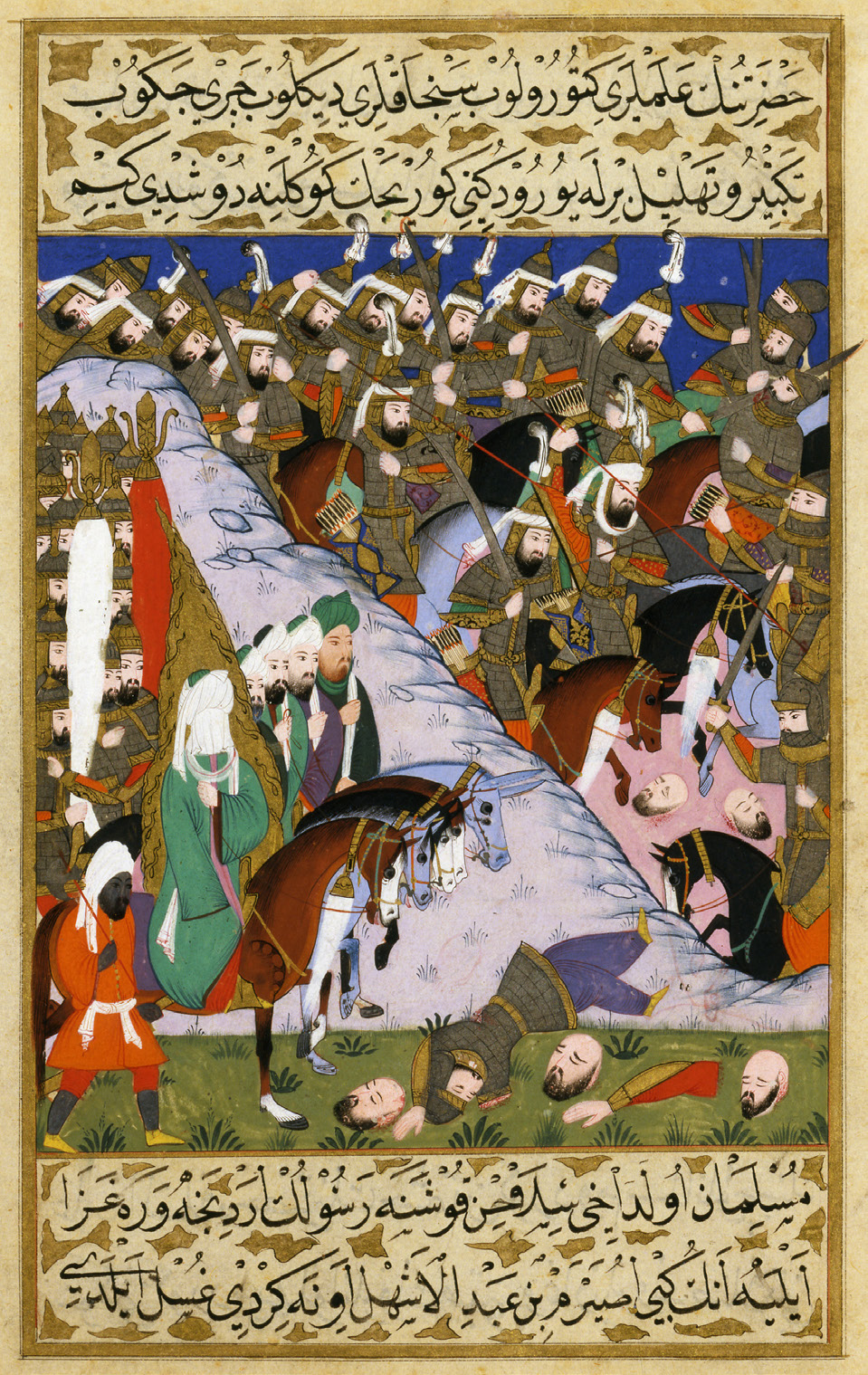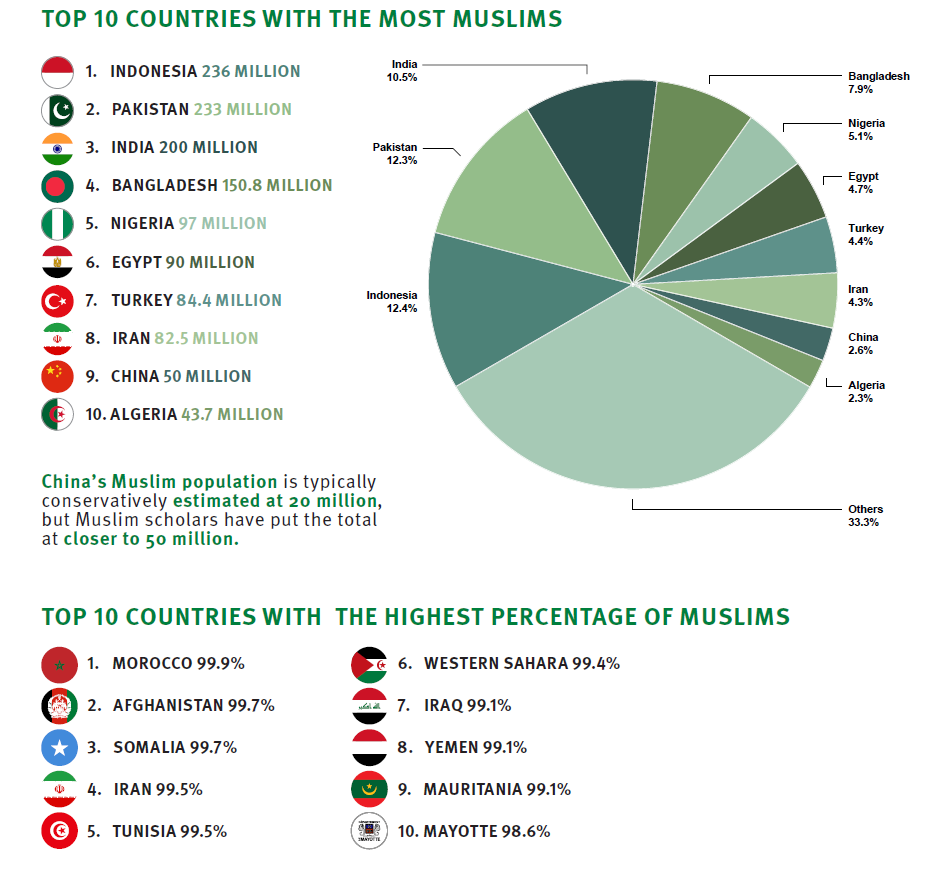From the Green Dome of the Prophet’s Mosque in Medina to the fluorescent greens of flags and political campaigns, Islam has established itself as the world’s “green” religion
Green has strong associations to Islam. Prophet Muhammad seems to have favoured the colour and is said to have worn a green cloak and turban. !e Hadith, which are generally believed to record the words and actions of the Islamic prophet, are full of references to the colour. In one, it says, “When Allah’s Apostle died, he was covered with a Hibra Burd”, a green square decorated garment. In the Quran, Islam’s holy book, the colour is associated with paradise, a place where people “will wear green garments of fine silk”.

Uhud, from a 1595 edition of the Siyer-i Nebi, a 16th-century Ottoman manuscript
That green should be symbolic in the dry desert where Islam emerged is hardly surprising. The Quranic figure Al-Khidr – traditionally translated as “the Green One” or the “Verdant One” – symbolises immortality and has been associated with esoteric knowledge or fertility by Islamic scholars. Al-Khidr may have inspired the Green Knight, the heroic character of medieval legend, who is described in one story as worshipping Muhammed. Some scholars see green as a natural fit for Islam, since the colour is in the middle of the spectrum: the prophet preached moderation and the Quran describes the Muslim community as “the midmost nation”.
Islamic history is replete with references to green. While the Sunni Abbasid Caliphate (750–1258), the third caliphate to succeed Muhammad, wore black and had black flags, and the most common Shia colour was white, green flags were adopted by
Shiites in the early Islamic period. Green was also the dynastic colour of the Shia Fatimid Caliphate (909–1171), whose followers traced their ancestry to Muhammad’s daughter Fatima and her husband, Ali ibn Abi Talib, the first Shia imam. During the Crusades of the medieval period, Islamic soldiers wore green to identify themselves, while the Christian crusaders studiously avoided green in their coats of arms. In the Ottoman Empire (1299–1922), the wearing of green turbans was a privilege afforded to the Sayyids, the descendants of Muhammad. Anyone else was punished for it. The association of Islam with green remains strong today. You’ll notice green used to paint the domes of mosques, dye the binding of Qurans, and saturate the campaigns of Islamist political parties. Despite the religious conflicts of history, and despite the bright green flag of Hamas, the colour will, for the vast majority of Muslims, continue to represent peace, tranquillity and moderation.

The World’s Second-Large” Religion
Earth is home to around 2 billion Muslims, a quarter of the planet’s population. The Islamic population is principally split between about 85–90% Sunni Muslims and 10–15% Shia Muslims. Most Shias (70–80%) live in just four countries: Iran, Pakistan, India and Iraq.












